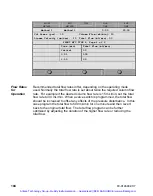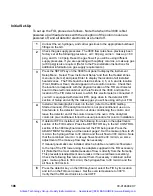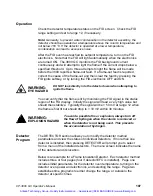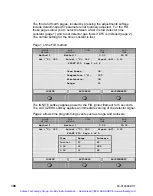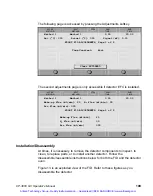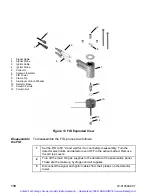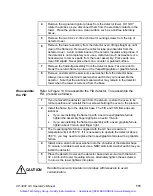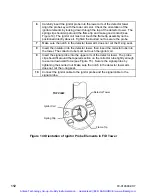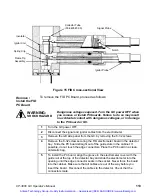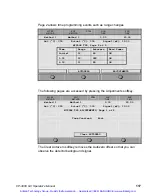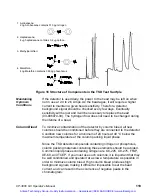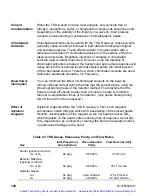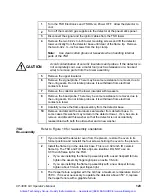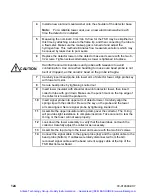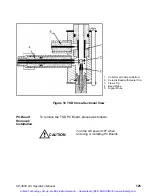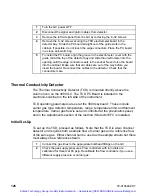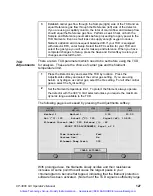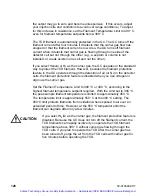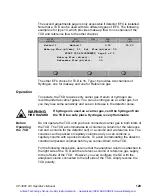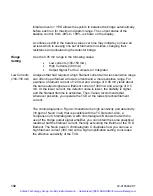
118
03-914648-00:7
The second Adjustments page is only accessible if detector EFC is installed.
ACTIVE
METHOD
EDIT
METHOD
CTRL
RUN
TIME
END
TIME
Method 1
Method 1
0.00
20.00
Make-up Flow (ml/min): 25 H
2
Flow (ml/min): 2.5
Air Flow (ml/min): 175
MIDDLE TSD ADJUSTMENTS, Page 2 of 2
Make-up Flow (ml/min)
25
H
2
Flow (ml/min)
4.5
Air Flow (ml/min)
175
Optimization
of the TSD
Using the
Varian Test
Sample
The sensitivity of the TSD is highly dependent on bead temperature and the
selectivity is dependent on hydrogen flow. In addition, there are slight
variations from bead to bead and a bead changes slowly as it ages.
Therefore, optimum operating conditions for a given TSD cannot be
specified exactly; the user should determine optimum operating conditions
for the application and TSD bead.
The detector responds to both nitrogen and phosphorus. It is not possible to
significantly change the relative response of nitrogen to phosphorus.
Determining
Optimum
Hydrogen
Flow
Although a nominal hydrogen flow of 4.0 mL/min is suggested, the nitrogen-
to-carbon selectivity versus hydrogen flow often differs slightly from bead to
bead. Consequently, for each new bead it is useful to chromatograph the
detector test sample at several values of hydrogen flow (from 4 to 5.5
mL/min) to determine the best hydrogen flow for that bead.
1
Zero the TSD signal. Inject 1 µL of TSD test sample (82-005048-04). A
normal response will result in the bead quenching during the solvent peak
(i.e., a negative deflection of the pen will occur), and a positive response for
the azobenzene, heptadecane, methyl parathion, and malathion peaks.
Adjust the detector range to keep the peaks on scale.
2
If the azobenzene peak (see the appropriate chromatogram below) is less
than 3 times the height of the heptadecane peak, decrease the hydrogen
flow rate and re-inject the sample. If injection of the test sample results in
quenching by the solvent peak and the bead fails to re-ignite, simply
increase the bead current slowly, with intervening pauses of ~15 minutes,
until the bead re-ignites. Then repeat step 1.
3
Over the next few days, the background current of the bead will decrease,
and the sensitivity will also decrease to a steady level. At this point the
sensitivity of the bead will remain relatively constant, with low baseline drift,
and low noise.
Artisan Technology Group - Quality Instrumentation ... Guaranteed | (888) 88-SOURCE | www.artisantg.com

